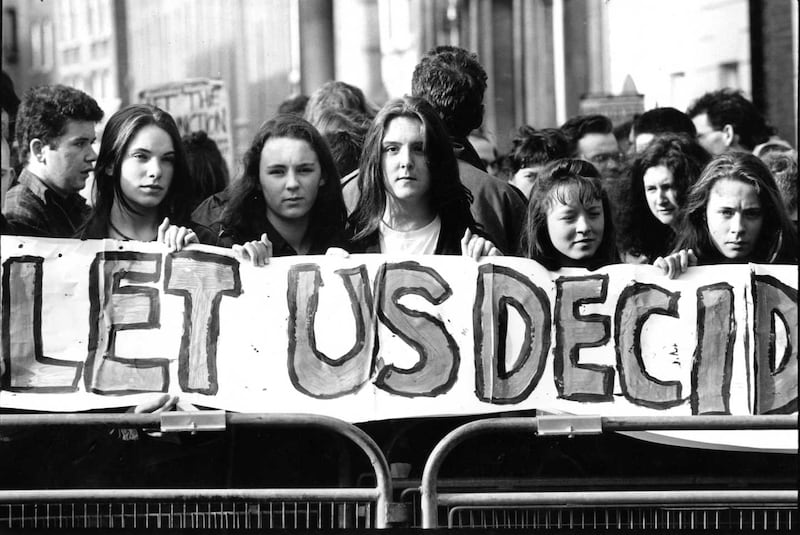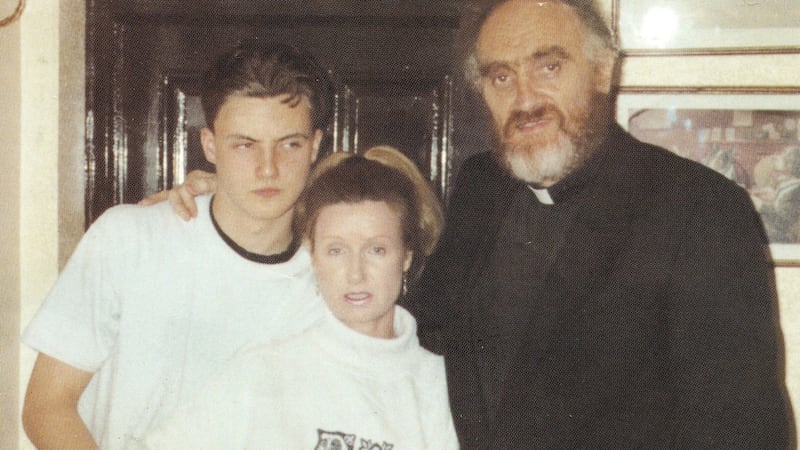A pro-choice canvasser who knocks on doors in an affluent city suburb discerns a certain reserve, a snippy dismissiveness and – where there are conversations – a notable leaning towards what she describes as a “sentimentality” about the Catholic Church and its brand of moral teaching.
I recognise that thread of “sentimentality”. It is etched in my bones. I think of my uncles – missionary priests who established coffee-grower co-ops in Kenya in the 1950s and worked with feral street gangs in Los Angeles – with an enduring sense of loss. Recently when in need of the comfort of ritual and practical, pastoral care, our family found it in wholeheartedly generous old friends who happen to be Catholic clerics and who gave it in spite of my watery, la carte Catholicism. Then again, unlike many commentators, those particular men encounter humanity at its most damaged and most vulnerable every day of their working lives. It stands to reason that religious orthodoxy will be pretty low on their what-would-Jesus-do checklist when reflecting on a day’s labours.
I wonder what they made of the Claire Byrne referendum debate on Monday. Any sentient being must have been conscious that it was also being viewed by many distressed, vulnerable people. Yet the tone of the No side was no more humble than in 1983. The main difference was the absence of a pontificating Fr Michael Cleary-style cleric, or any cleric. But since many of the promoters of the No side are devout Catholics anyway (minus the startling side of Cleary hypocrisy, we trust), was this debate any more honest for the lack of a Roman-collared participant?

Deeply polarised audience
What purpose did it serve, this crammed studio-colosseum with a pumped, deeply polarised audience and their wildly inappropriate clapping, jeering, hooting, heaves of adolescent sighing, gotcha!-style student-debating vibe?
What purpose did it serve, this crammed studio-colosseum with a pumped, deeply polarised audience and their wildly inappropriate clapping, jeering, hooting...?
With no fact-checking, no time to drill into the reasoning of the Oireachtas joint committee on the amendment, no time for considered discussion in the breathless gallop to cram in as many soundbites as possible, it was no fault of the presenter that it felt like a throwback to Hughie Green's famous catchphrases on Opportunity Knocks, the Britain's Got Talent of the 1950s: "Let's take a look at the Clapometer!"; "It's make-your-mind-up-time!"; "This is your show, folks, and I do mean YOU!"
Part of the problem is that no debate, “good” or “bad”, can fill the void for many women. The ideological battle over women’s lives, health, wellbeing and status has been too constant, too exhausting, too profoundly damaging.
We hold within living memory the savagely misogynistic culture presided over by clerics, politicians, medics and pillars of society, a culture that wore many of our mothers’ generation to the bone, physically, emotionally and psychologically. Even those of us not yet born in 1951 have a cultural memory of another seismic, ideological clash between church and State, the well-documented mother and child scheme, where women’s health was the battleground. When it was proposed to introduce a free mother and child service and free healthcare for all children up to 16, the medical establishment was appalled. “Every woman and every child up to 15 would become a free patient by law”, protested Fine Gael TD and medical doctor TF O’Higgins “and 60 per cent to 70 per cent of ordinary doctor’s income came from attendance on women and children”. Those pesky women and their shedloads of children that just sprang out of nowhere, eh?
Lurch to socialism
Archbishop John Charles McQuaid foresaw numerous calamities, not least the fact that women would be able to discuss family planning with their doctors, because that was the remit of the church, not the State. He also perceived the increased role of the State in the life of the individual as a lurch towards socialism – indeed totalitarianism. It was an early rehearsal of the argument that the power over the health of children belonged to the parents, not to the State. And yet, decisions regarding the life and health of the mother belonged to the church.

The role of the church and its acolytes in the shaping of public policy has cast a long, long shadow over Irish public life, families and in particular, women’s healthcare. But of course it wasn’t the affluent middle classes who bore the brunt of it. The problem for the Yes door-knocker that we came in with is that people with money and access could always find a way to plan their families or discreetly arrange abortions. It’s what enables many to see why this referendum is about choice. But it’s also what enables some to be snippy with canvassers even now because their family secrets are securely locked within them. So of course they couldn’t possibly know anyone who has ever been so unfortunate . . . How could any one debate encompass all that pain?












